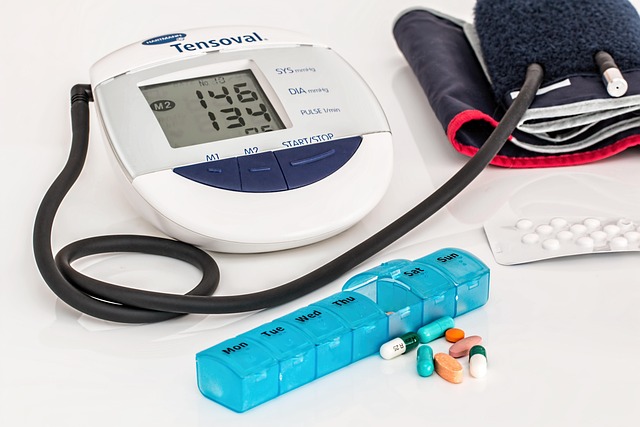Migraine Treatment
Living with migraines means more than just experiencing headaches. These neurological events can be debilitating, affecting work, relationships, and overall quality of life. With symptoms that range from intense throbbing pain and nausea to sensitivity to light and sound, finding effective treatment becomes crucial for the millions of people who suffer from this condition. Fortunately, medical advancements have expanded the range of options available for managing and treating migraines, offering hope to those who struggle with both occasional and chronic episodes.

Understanding Migraine Treatment Options
The landscape of migraine treatment has evolved significantly in recent years. Treatment approaches typically fall into two main categories: abortive (acute) treatments that aim to stop a migraine once it has begun, and preventive treatments designed to reduce the frequency and severity of migraine attacks. Common abortive medications include over-the-counter pain relievers like ibuprofen and aspirin, as well as prescription options such as triptans, which work by narrowing blood vessels and blocking pain pathways. Preventive treatments may include beta-blockers, antidepressants, anti-seizure medications, and newer options like CGRP antagonists that specifically target the migraine process.
Lifestyle modifications also play a crucial role in migraine management. Identifying and avoiding personal triggers—which may include certain foods, stress, irregular sleep patterns, or environmental factors—can significantly reduce attack frequency. Many patients benefit from keeping a detailed headache diary to help identify patterns and triggers, allowing for more personalized treatment approaches. Complementary therapies such as acupuncture, biofeedback, and stress management techniques have also shown promise for some individuals.
Advanced Treatments For Chronic Migraines
When traditional medications fail to provide adequate relief, advanced treatment options offer new hope for chronic migraine sufferers. One breakthrough approach is Botox (onabotulinumtoxinA) injections, FDA-approved specifically for chronic migraines. Administered every 12 weeks, these injections target multiple sites around the head and neck to reduce headache days. The procedure typically involves 31-39 injections and has shown significant reduction in headache frequency for many patients.
Neuromodulation devices represent another frontier in migraine treatment. These non-invasive or minimally invasive devices stimulate specific nerves associated with migraine pain. Options include single-pulse transcranial magnetic stimulation (sTMS), which sends brief magnetic pulses to the brain; external trigeminal nerve stimulation; and vagus nerve stimulation devices. These approaches are particularly valuable for patients who cannot tolerate traditional medications or who experience inadequate relief from them.
Monoclonal antibody treatments targeting calcitonin gene-related peptide (CGRP) or its receptor have revolutionized preventive therapy for chronic migraines. Medications like erenumab, fremanezumab, galcanezumab, and eptinezumab are administered via monthly or quarterly injections and have demonstrated effectiveness in reducing migraine days with fewer side effects than many older preventive medications.
Chronic Headache Solutions
For those experiencing chronic headaches, a multidisciplinary approach often yields the best results. Comprehensive headache centers bring together neurologists, pain specialists, physical therapists, psychologists, and other professionals to address the complex nature of persistent headache disorders. This team approach allows for personalized treatment plans that may combine pharmacological interventions with behavioral therapy, physical therapy, and complementary approaches.
Addressing comorbid conditions is essential when treating chronic headaches. Anxiety, depression, sleep disorders, and other health issues frequently accompany chronic migraine and may exacerbate symptoms or complicate treatment. Managing these conditions simultaneously often improves headache outcomes. Cognitive behavioral therapy (CBT) has proven particularly effective for many patients, helping them develop coping strategies and change negative thought patterns associated with pain.
Dietary interventions and nutritional supplements represent another avenue for chronic headache management. Some patients report improvement with elimination diets that remove common triggers like aged cheeses, processed meats, alcohol, and artificial sweeteners. Supplements such as magnesium, riboflavin (vitamin B2), coenzyme Q10, and feverfew have shown varying degrees of effectiveness in clinical studies, though patients should always discuss these options with healthcare providers before beginning supplementation.
Chronic Headache Relief
Immediate relief strategies are crucial for managing acute episodes of chronic headaches. Beyond medication, techniques such as applying cold or hot compresses, resting in a dark, quiet room, and practicing relaxation exercises like deep breathing can provide some relief during an attack. Some patients find that gentle pressure on painful areas, gentle massage of the scalp and neck, or specific acupressure points can temporarily reduce pain intensity.
Preventive lifestyle measures can significantly impact chronic headache frequency and severity. Maintaining regular sleep schedules, staying hydrated, engaging in moderate regular exercise, and practicing stress management techniques all contribute to better headache control. For some patients, biofeedback training helps develop awareness of physiological responses to stress, allowing them to implement relaxation techniques before headaches escalate.
Emerging technologies continue to expand relief options for chronic headache sufferers. Wearable devices that deliver mild electrical or thermal stimulation, smartphone apps for tracking and managing headaches, and telehealth services connecting patients with headache specialists have made treatment more accessible. Remote monitoring allows healthcare providers to adjust treatment plans based on real-time patient data, potentially improving outcomes for those with difficult-to-treat headache disorders.
Migraine Treatment Costs and Options
The financial burden of migraine treatment varies widely depending on the approach and required medications. Insurance coverage plays a significant role in determining out-of-pocket expenses, particularly for newer specialized treatments.
| Treatment Type | Estimated Cost Range (Without Insurance) | Average Insurance Coverage |
|---|---|---|
| Triptan medications (generic) | $30-150 per month | Often covered with copay ($5-50) |
| CGRP antagonist injections | $575-700 per month | Variable coverage, often requiring prior authorization |
| Botox for chronic migraine | $1,500-2,500 per treatment session | Covered for qualifying patients after other treatments fail |
| Neuromodulation devices | $250-575 for rental, $575-680 for purchase | Limited coverage, often requires documentation |
| Comprehensive headache center evaluation | $500-2,500 initial consultation | Partially covered with specialist referral |
Prices, rates, or cost estimates mentioned in this article are based on the latest available information but may change over time. Independent research is advised before making financial decisions.
Many pharmaceutical companies offer patient assistance programs to help offset the cost of newer migraine treatments, particularly for the expensive monoclonal antibody therapies. Additionally, some neurologists and headache specialists work with patients on sliding scale fees or payment plans. For those with frequent, debilitating migraines, the cost of treatment must be weighed against the economic impact of lost work productivity and quality of life.
Conclusion
Migraine treatment has advanced significantly, offering hope to those who suffer from this debilitating condition. From traditional pain relievers to cutting-edge monoclonal antibodies, the range of available options continues to expand. The most successful approach typically involves a combination of acute and preventive treatments, lifestyle modifications, and sometimes complementary therapies. By working closely with healthcare providers to develop a personalized treatment plan, most migraine sufferers can achieve significant improvement in their symptoms and reclaim quality of life.
This article is for informational purposes only and should not be considered medical advice. Please consult a qualified healthcare professional for personalized guidance and treatment.




